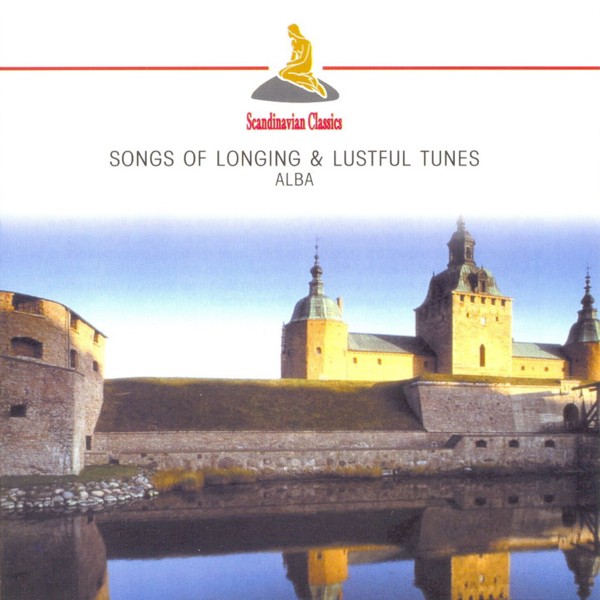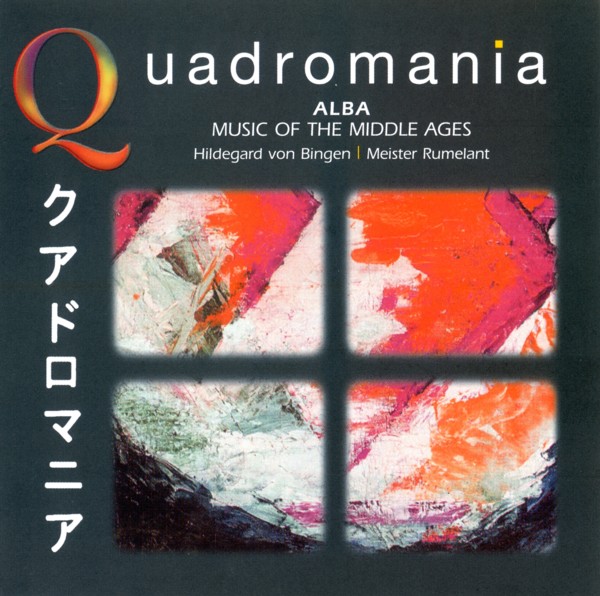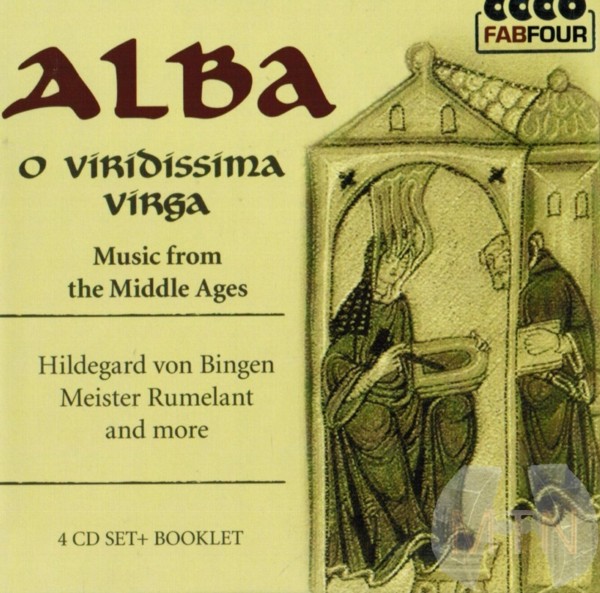
medieval.org
Classico CLASSCD 170
1997
Membran · Scandinavian Classics, CD 220528 — 2003

medieval.org
Classico CLASSCD 170
1997
Membran · Scandinavian Classics, CD 220528 — 2003
1. Reis glorios [9:25] Guiraut de BORNEIL
2. La seconde Estampie Royal [3:14]
Martin CODAX. Cantigas de Amigo
3. Ondas do mare de Vigo [3:28]
ca I
4. Mandad' ei comigo [1:47]
ca II
5. Mia irmana fremosa [2:41]
ca III
6. Ai Deus, se sab' ora meu amigo [1:47]
ca IV
7. Eno sagrado en Vigo [1:15]
ca VI
8. Quantas sabedes amare amigo [3:09]
ca V
9. Ai ondas que eu vin veere [1:43]
ca VII
10. La quinte Estampie Royal [3:32]
11. La septime Estampie Royal [2:49]
12. La tierche Estampie Royal [4:38]
13. La seste Estampie Royal [1:44]
14. La uitime Estampie Royal [4:04]
15. La quarte Estampie Royal [2:14]
16. Virgen Madre [13:46]
CSM 340
ALBA
Agnethe Christensen, alto
Poul Høxbro, pipe & tabor, percussion
recording: Audiophon Recording Studio, 1997

CANTIGAS DE AMIGO
In February 1914 the magazine Arte Español published for the first time
in modern history secular troubadour songs from the large Portuguese and
Galician area. Pedro Vindel, a book shop owner from Madrid. found seven
songs by the troubadour Martin Codax written on a piece of parchment
wrapped around another manuscript. The songs, which have been dated from
the second half of the 13th century, are all about the everlasting
subject of love - although the medieval poets were especially inspired
by love when it remained unrequited. It might be the troubadour's
passionate adoration of the unobtainable noblewoman or love of the most
pure of all women, the Virgin Mary. Or it might, as often is the case in
these songs, be longing for a loved one from whom the medieval poet and
composer is parted, or longing for a person as yet unknown. It is
uncertain exactly where the songs originate from, or how they were
performed, but the many references to the port of Vigo naturally point
to deep roots in what is now called Galicia in Northwest Spain; an area
where the sound of singing to framedrums can still be heard.
ESTAMPIE ROYAL
"My good friend, get out of bed. For I cannot sleep anymore and my mind
is in a turmoil. So I beg you to come and play an estampie at my
beloved's door." The estampie was most probably the most widespread form
of instrumental music in medieval times. Medieval literature contains
many references to the estampie being played, sung or danced (estampida,
instanpitta, stantipe and so on) and in the impressive French
"Manuscript de Roi" we are fortunate enough to find some of the few
surviving estampies that together with a handful of written instanpittas
from Italy give us a unique picture of some of the everyday music that
scholars did not feel worthwhile to write down at the time.
An estampie always follows the same form: a piece of music with a
refrain, with the verses (A, B, C ...) and the refrain (with two
different endings) being combined as follows: A + refrain 1, A+ refrain
2, B + refrain 1, B+ refrain 2, C + refrain 1, C + refrain 2 etc. The
estampie was common in large parts of Europe and was played on almost
all instruments - perhaps even sung without lyrics - and could be
performed in concert or for dancing. After a banquet, to serenade a
loved one, in a meadow or garden. But not only as vapid entertainment,
for according to the French scholar Johannes de Grocheio its complexity
makes the mind of all who play it - and all who listen to it - "linger
with it, and it often leads the minds of the powerful away from depraved
thoughts."
REIS GLORIOS & VIRGEN MADRE
Medieval Spain and France had many ties, both political and cultural.
Marriages created complicated family links between the princely houses
and the royal courts, as was the case in many places in Europe.
Musicians and poets ensured a lively cultural exchange during the summer
months, when they travelled throughout the countries. Many sources
confirm this, but there is an especially lyrical proof of this
historical fact in the songs 'Reis Glorios' and 'Virgen Madre'. A French
ballad about infidelity and a later Spanish song praising the Virgin
Mary - very different lyrics, dates and origins, but still sung to
almost the same melody.
ALBA
Agnethe Christensen from Sweden has her roots in both classical
and folk music. She studied at the Royal Danish Academy of Music and
Schola Cantorum in Basel, and has participated in a large number of solo
recordings for different radio stations and for CD productions.
Poul Høxbro from Denmark graduated in 1994 from the Carl Nielsen
Academy of Music with recorder as his main instrument. He has now
specialised in pipe & tabor(s), and with these instruments he is
often a guest in a variety of musical styles - from Renaissance to
techno.
Compilations:

